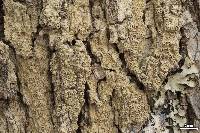
Consortium of Lichen Herbaria
- building a Global Consortium of Bryophytes and Lichens as keystones of cryptobiotic communities -
- Home
- Search
- Images
- Species Checklists
- US States: O-Z >
- US National Parks
- Central America
- South America
- US National Parks
- Southern Subpolar Region
|
|
|
|
Family: Pertusariaceae
|
Nash, T.H., Ryan, B.D., Gries, C., Bungartz, F., (eds.) 2002. Lichen Flora of the Greater Sonoran Desert Region. Vol 1. Thallus: continuous to fissured, with thin to moderately thick verrucae; margins: entire, unzoned upper surface: yellow-gray to greenish yellow, smooth, tuberculate to rugose-plicate, shiny or dull, epruinose; lacking soredia or isidia fertile verrucae: concolorous with thallus, pertusariate to frequently falsely lecanorate, numerous and crowded, often fused (2-5) in mutually deformed groups, c. 0.4-2.6 mm in diam.; ostioles: 1 or 2-8 per verruca, level to mostly sunken, soon dilating to form a pseudolecanorate disc Apothecia: 1-5 per verruca; disc: black, grayish pruinose or epruinose; epithecium: dark brown to black-brown, K+ strongly violet; hypothecium: hyaline or yellowish asci: clavate, 260-420 x 50-90 µm, (6-) 8-spored ascospores: hyaline, oval to ellipsoid, 55-110 x 30-55 µm; spore wall: 2-layered; outer spore wall: c. 2-4 µm thick; inner spore wall: 2-12 µm thick, smooth; apices: up to 25 µm thick Pycnidia: not seen Spot tests: K+ yellow to red, C+ orange, KC-, P+ yellow to orange, UV+ orange-red Secondary metabolites: norstictic and thiophaninic acids (both major), connorstictic acid, 2-chloro-6-O-methylnorlichexanthone, and 4-chloro-6-O-methylnorlichexanthone, and gyrophoric acid (all minor). Substrate and ecology: on bark of deciduous trees, mostly Quercus World distribution: only known from the western Hemisphere and shows a disjunct distribution, occurring both in the east and southwest part of North America Sonoran distribution: coastal Califorina at 150-400 m and southern Baja California Sur. Notes: This species is characterized by a yellowish thallus, ascomata with sunken ostiola which soon dilate and fuse to form a pseudolecanorate disc, a K+ violet epithecium, 8-spored asci and the presence of norstictic and thiophaninic acids. As discussed above, the species is very similar to P. hymenea and best distinguished by its different chemistry. |
|
|
|
Powered by Symbiota
















































